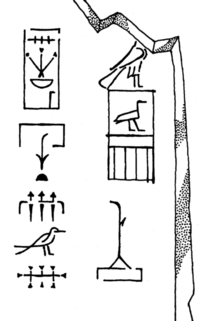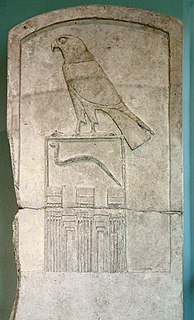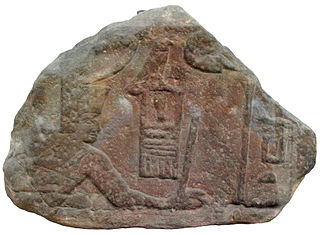
Sanakht was an ancient Egyptian king (pharaoh) of the Third Dynasty during the Old Kingdom. His chronological position is highly uncertain, and it is also unclear under which Hellenized name the ancient historian Manetho could have listed him. Many Egyptologists connect Sanakht with the Ramesside cartouche name Nebka. However, this remains disputable, because no further royal title of that king was ever found; neither in contemporary sources, nor in later ones. There are two relief fragments depicting Sanakht that once originated from the Wadi Maghareh on the Sinai Peninsula.

Sekhemkhet was an ancient Egyptian king (pharaoh) of the 3rd dynasty during the Old Kingdom. His reign is thought to have been from about 2648 BC until 2640 BC. He is also known under his later traditioned birth name Djoser-tety and under his Hellenized name Tyreis. He was probably the brother or eldest son of king Djoser. Little is known about this king, since he ruled for only a few years. However, he erected a step pyramid at Saqqara and left behind a well known rock inscription at Wadi Maghareh.
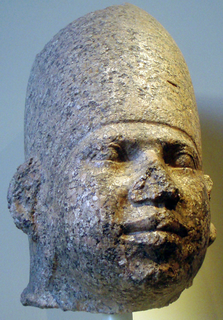
Huni was an ancient Egyptian king and the last pharaoh of the 3rd dynasty during the Old Kingdom period. Following the Turin king list, he is commonly credited with a reign of 24 years, ending c. 2600 BC.

Khaba was a pharaoh of Ancient Egypt, active during the 3rd dynasty of the Old Kingdom period. The exact time during which Khaba ruled is unknown but may have been around 2670 BC.

Iry-Hor or Ro was a predynastic pharaoh of Upper Egypt during the 32nd century BC. Iry-Hor's existence was debated, with the Egyptologist Toby Wilkinson contesting the reading and signification of his name. However, continuing excavations at Abydos in the 1980s and 1990s and the discovery in 2012 of an inscription of Iry-Hor in the Sinai confirmed his existence. Iry-Hor is the earliest ruler of Egypt known by name and possibly the earliest-living historical person known by name.

Nebra or Raneb is the Horus name of the second early Egyptian king of the 2nd dynasty. The exact length of his reign is unknown since the Turin canon is damaged and the year accounts are lost. The ancient Greek historian Manetho suggests that Nebra's reign lasted 39 years, but Egyptologists question Manetho's view as a misinterpretation or exaggeration of information that was available to him. They credit Nebra with either a 10- or 14-year rule. According to different authors, Nebra ruled Egypt c. 2850 BC, from 2820 BC to 2790 BC, 2800 BC to 2785 BC or 2765 BC to 2750 BC.
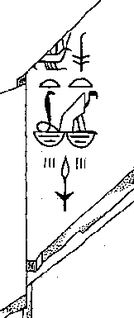
Weneg, also known as Weneg-Nebty, is the throne name of an early Egyptian king, who ruled during the second dynasty. Although his chronological position is clear to Egyptologists, it is unclear for how long King Weneg ruled. It is also unclear as to which of the archaeologically identified Horus-kings corresponds to Weneg.
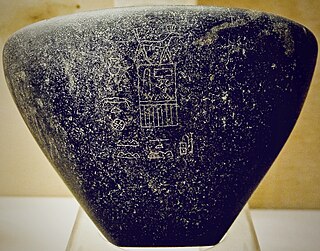
Seth-Peribsen is the serekh name of an early Egyptian monarch (pharaoh), who ruled during the Second Dynasty of Egypt. His chronological position within this dynasty is unknown and it is disputed who ruled both before and after him. The duration of his reign is also unknown.
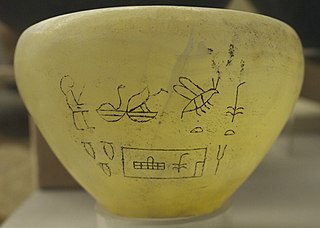
Semerkhet is the Horus name of an early Egyptian king who ruled during the first dynasty. This ruler became known through a tragic legend handed down by the ancient Greek historian, Manetho, who reported that a calamity of some sort occurred during Semerkhet's reign. The archaeological records seem to support the view that Semerkhet had a difficult time as king and some early archaeologists even questioned the legitimacy of Semerkhet's succession to the Egyptian throne.

Sekhemib-Perenma´at, is the horus name of an early Egyptian king who ruled during the 2nd dynasty. Similar to his predecessor, successor or co-ruler Seth-Peribsen, Sekhemib is contemporarily well attested in archaeological records, but he does not appear in any posthumous document. The exact length of his reign is unknown and his burial site has yet to be found.
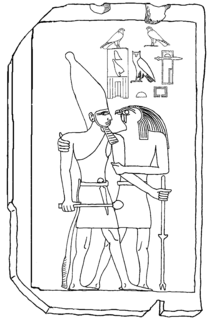
Qahedjet could be the horus name of an Ancient Egyptian king (pharaoh) who may have ruled during the 3rd dynasty or could be a voluntarily archaistic representation of Thutmose III. Since the only artifact attesting the ruler and his name is a small stela made of polished limestone of uncertain origin and authenticity, Egyptologists are discussing the chronological position and historical figure of Qahedjet.

Nebka is the birth name of an Ancient Egyptian king (pharaoh) who ruled during the 3rd dynasty of the Old Kingdom. He is thought to be identical with the Hellenized name form Necherophes. Nebka is one of the most disputed kings of the Old Kingdom, since his name is handed down as a cartouche name only, but is preserved always in the same typographical way. And because the sources for the name “Nebka” are that numerous, this ruler is seen as a historically important figure.
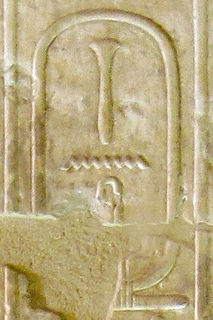
Wadjenes, also known as Wadjlas, Ougotlas and Tlas, was an early Egyptian king who may have ruled during the 2nd dynasty. Since the name form "Wadjenes" is not contemporarily attested as the name of a king, but frequently appears in Ramesside kinglists, Egyptologists to this day are trying to connect Wadjenes with contemporary Horus-kings.
Nubnefer is the birth name of a king (pharaoh) who may have ruled during the 2nd dynasty of Ancient Egypt. The exact length of his reign is unknown and his chronological position is unclear.

Sneferka is the serekh-name of an early Egyptian king who may have ruled at the end of the 1st dynasty. The exact length of his reign is unknown, but thought to have been very short and his chronological position is unclear.

Horus Sa was a possible early Egyptian pharaoh who may have reigned during the 2nd or 3rd dynasty of Egypt. His existence is disputed, as is the meaning of the artifacts that have been interpreted as confirming his existence.

Inykhnum was an ancient Egyptian high-ranking official who worked and lived during the transition time between 2nd dynasty and 3rd dynasty. The king(s) under which he served are not known for certain, the subject being currently highly disputed.
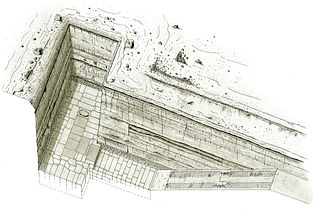
The Unfinished Northern Pyramid of Zawyet El Aryan, also known as Pyramid of Baka and Pyramid of Bikheris is the term Archaeologists and Egyptologists use to describe a large shaft part of an unfinished pyramid at Zawyet El Aryan in Egypt. It is dated by mainstream scholars to the early or the mid-4th Dynasty during the Old Kingdom period. The pyramid owner is not known for certain and most egyptologists, such as Miroslav Verner, think it should be a king known under his hellenized name, Bikheris, perhaps from the Egyptian Baka. On the contrary, Wolfgang Helck and other egyptologists doubt this attribution.
